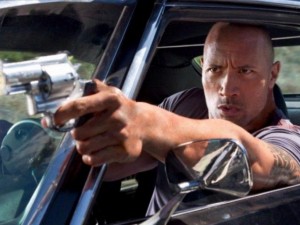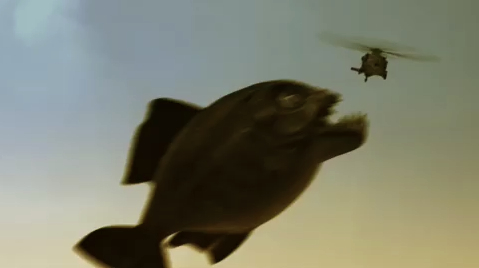 So it has come to pass. Twenty years after an “idea simply fell into†author J.K. Rowling’s head, we are nearing the completion of a franchise development truly without precedent. Not only did Rowling manage to write an extremely rare heptilogy of novels, and make every one engaging enough to keep readers begging for more, but Warner Brothers Studios is now nearing completion of a truly unique achievement: an actual octilogy of multi-hundred-million dollar films, consistently written and cast over ten years. This achievement deserves mention, even if it’s ultimately just a testament to mindless consumerism. With so many major characters in the epic tale, many of them juveniles, keeping the entire cast together for eight movies must have been a managerial and legal nightmare, to say nothing of churning the movies out fast enough to (almost) keep up with the aging actors. Add to that the level of special effects the story requires and the problems always posed by child actors, and it’s truly amazing any of these films turned out decent.
So it has come to pass. Twenty years after an “idea simply fell into†author J.K. Rowling’s head, we are nearing the completion of a franchise development truly without precedent. Not only did Rowling manage to write an extremely rare heptilogy of novels, and make every one engaging enough to keep readers begging for more, but Warner Brothers Studios is now nearing completion of a truly unique achievement: an actual octilogy of multi-hundred-million dollar films, consistently written and cast over ten years. This achievement deserves mention, even if it’s ultimately just a testament to mindless consumerism. With so many major characters in the epic tale, many of them juveniles, keeping the entire cast together for eight movies must have been a managerial and legal nightmare, to say nothing of churning the movies out fast enough to (almost) keep up with the aging actors. Add to that the level of special effects the story requires and the problems always posed by child actors, and it’s truly amazing any of these films turned out decent.
And I would have to say, that’s just what they are: decent. Nothing more, nothing less. None of them are bad by any means, but it’s impossible for me to watch one without thinking about how much more powerful the book was. The books, unfettered by the logistical problems mentioned above, and free to be as long as they needed, took us to places no movie ever could. Two of the most powerful scenes from Book VII – when Ron destroys the locket, and when Herminoe attacks him afterward – have been reread many times by me, drinking in every word and feeling the raw emotion of the characters. Both of these scenes are pretty flat in the movie. In all honesty, though, I can’t read the more recent books without longing for the early books.
The tone of the stories has certainly changed along the way from Sorceror’s Stone to Deathly Hallows. Check out this excerpt from Stone, chapter 8:
There were a hundred and forty two staircases at Hogwarts: wide, sweeping ones; narrow rickety ones; some that led somewhere different on a Friday; some with vanishing steps halfway up that you had to remember to jump. Then there were doors that wouldn’t open unless you asked politely, or tickled them in exactly the right place, and doors that weren’t really doors at all, but solid walls just pretending. It was also very hard to remember where anything was because it all seemed to move around a lot. The people in the portraits kept going to visit each other, and Harry was sure the coats of armor could walk.
Now listen to Hallows, chapter 1:
“Do you recognize our guest, Severus?†asked Voldemort. Snape raised his eyes to the upside-down face. All of the Death Eaters were looking up at the captive now, as though they had been given permission to show curiosity. As she revolved to face the firelight, the woman said in a cracked and terrified voice, Severus! Help me!â€
“Ah, yes,†said Snape as the prisoner turned slowly away again. “For those of you who do not know,†said Voldemort, “We are joined here tonight by Charity Burbage who, until recently, taught at Hogwarts.â€Â There were small noises of comprehension around the table. A broad, hunched woman with pointed teeth cackled. “Yes, Professor Burbage taught the children of witches and wizards all about Muggles … how they are not so different from us …â€
“Severus … please … please …â€
Nobody laughed this time. There was no mistaking the anger and contempt in Voldemort’s voice. For the third time, Charity revolved to face Snape. Tears were pouring from her eyes into her hair. Snape looked back at her, quite impassive, as she turned slowly away from him again.
“Avada Kedavra.â€
The flash of green light illuminated every corner of the room. Charity fell, with a resounding crash, onto the table below, which trembled and creaked. Several Death Eaters leapt back in their chairs. Draco fell out of his onto the floor. “Dinner, Nagini,†said Voldemort softly, and the great snake swayed and slithered from his shoulders onto the polished wood.
We all love stories about more exciting worlds hidden in our own. As we all know, the premise of Harry Potter is that there is a civilization of wizards and witches living in hiding somewhere within our own world. There are enough of them and they have enough power and resources to have their own towns, traditions and unique modes of transportation. Of course, if you’re buying this, you’ll probably buy that there are mutant turtles practicing ninjitsu in the sewer. Why haven’t any of the zillion satellites orbiting the earth photographed Hogwarts? How could an airborne event the size of the Quiditch World Cup go unnoticed by Muggles? If wizards are so powerful, why do they need to hide? The story occasionally posits flimsy explanations for this, but of course, we all know, the real answer is WHO FRICKIN’ CARES? Harry Potter gives us the chance to escape our world completely and enter one of dragons, adventure and the moral clarity that’s hard to find in real life.
Some more questions about Harry’s world: if Parseltounge is such a rare gift, why can any human apparently talk to Aragog the Spider in Chamber of Secrets? Why is Hogwarts full of ghosts, while Harry’s parents and other’s killed by Voldemort are truly gone?  (This one must have hit Rowling about halfway through the series, because she starts ignoring the ghosts as much as possible about then.) Things like this weren’t a problem when we laughed with 11-year-old Harry on magical school grounds, but as Rowling made the books more and more serious and world-changing, we were forced to question them more and more. One of the most irritating features of the movies is that they increasingly portray Harry against a backdrop of skyscrapers. Harry Potter was at his best when we could join him in a closed universe, nothing like our own, and forget our troubles amid the innocent fun of quiddich and wizard’s chess. Frankly, the subject matter of Harry Potter just isn’t worthy of epic battles and mature romance.
Having said all this, I must confess that I still genuinely enjoyed the later books, and genuinely enjoyed Deathly Hallows, Part 1. Splitting this story in half enables the film to at least come closer to the depth and richness of the book. I’m eager to see Part 2. If you’re a Potter fan, you should check this one out. Just do me one favor. Don’t deprive yourself by only watching the movies. PLEASE read the books.
The Book: [Rating:4/5]
The Movie: [Rating:3/5]




















